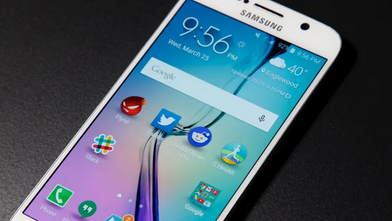Many people don’t upgrade their smartphone every year. Android phones become slower as they age. This can make it frustrating to use them, especially if you experience frequent slowdowns. It’s time to get some help for your old Android phone. It might be feeling slow.
It might be feeling tired or groaning from the extra apps and photos. It could be that the battery has died too soon. You might not be ready to part with the battery.
It’s possible to save it. It’s possible to make your Android phone feel a lot more responsive with a little effort. Here are seven tips to make your Android phone feel younger.
Restart your Android phone regularly
Let’s begin with the basics. It’s possible to not think of restarting your phone unless you receive an update, but it can help a lot. A simple restart of your phone in just 30 seconds can give it a boost in speed. It will free up memory,
kill background apps and processes, unstick any apps, and increase your phone’s overall speed. Even if you delete all apps from the Recents screen, some may still have RAM.
This can quickly adds up. A weekly restart is a great way to increase your phone’s performance, and extend its battery life.
Android updates available
Google’s Pixel and Nexus phones are able to update in the background automatically due to seamless Android updates. Most other phones do not.
It depends on how your settings are set up, you may not get an alert that an update has been released. It is important to ensure your phone has the latest security patches, bug fixes, and other updates.
Your phone’s location may vary. However, the System or Software updates pane within Settings will give you the best options. You might need to update several times depending on how long it has been. Make sure you double-check this information after the installation is complete.
Remove unused apps from Android phones
Many apps are hidden from our daily views, so it is easy to let hundreds of useless games and utilities accumulate digital dust within our app drawers. It’s okay if you have 128GB of storage. However, if you have 32GB or less, the space available can quickly become full.
Important system functions can stop working if you exceed your limit. This is just like your computer. You should take a look through your phone’s apps, and remove any that haven’t been used in awhile.
Install the latest operating system and applications on your smartphone
Some people don’t care that much about software updates and so don’t install them. It’s a mistake. Usually, updated software is good for your smartphone. Software updates often include bug fixes and improvements.
You should install them as soon and as possible. You can check for updates by going to Setting > > update (or any software update) to your phone.
It’s also a good practice to update all apps on your phone. Following our instructions in the “uninstall unwanted apps” section, you will now have only the most useful apps on your device. You should update them to the latest version in order to receive new features, bug fixes, and other improvements.
Factory Reset
You can also increase the performance of your Android smartphone by performing a factory reset and then starting over. Factory resets will get rid of any unnecessary clutter on your phone and give it new life. It is important to back up your data before you perform a factory restore.
Noting that the factory restore will bring back bloatware to your phone is also important. You should also delete any unnecessary apps that were preinstalled by your device manufacturer.
